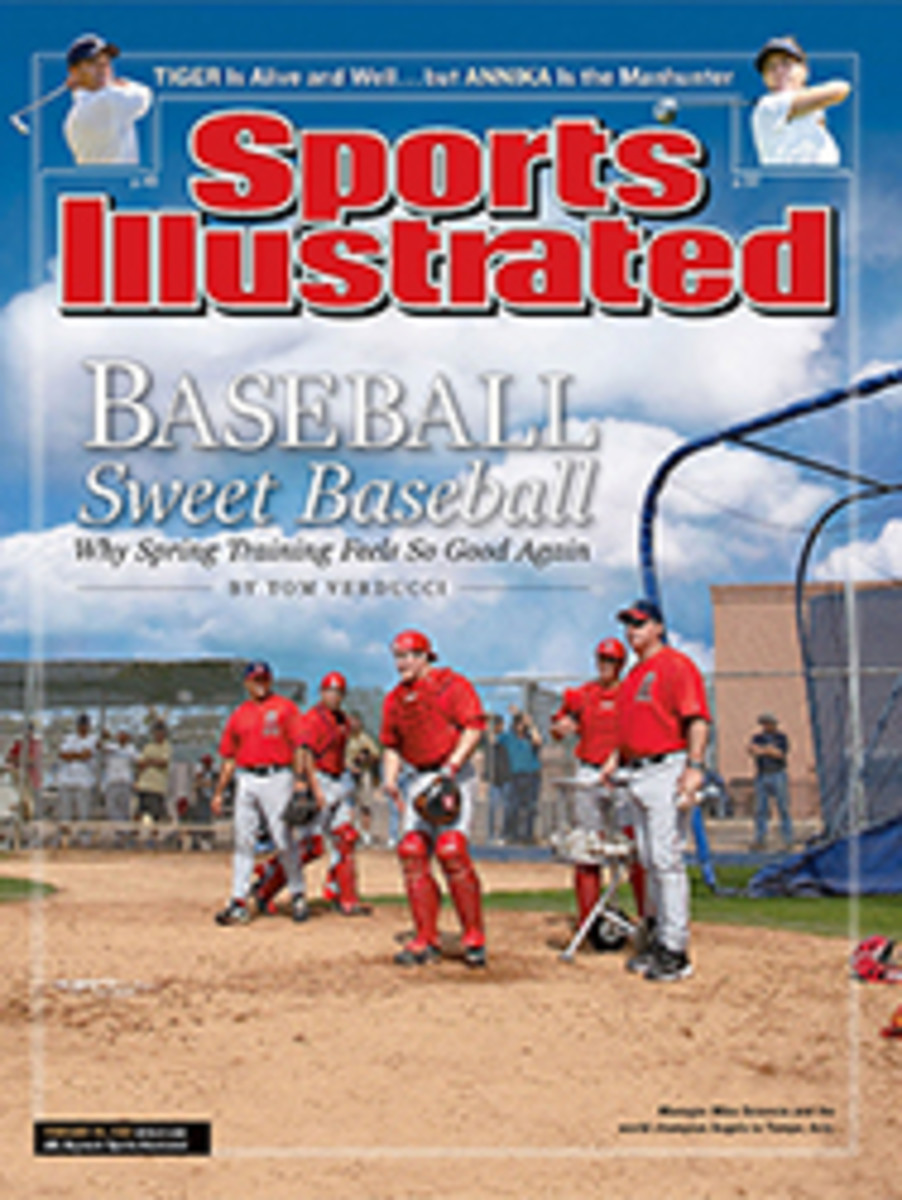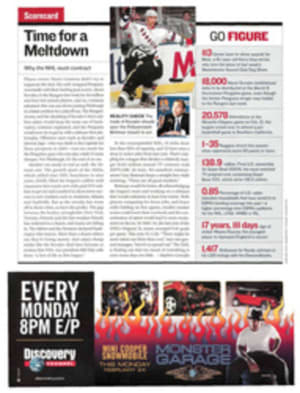
Big Play Tiger Woods eschewed the safe play for the risky one at the 15th hole, then used his power to nail a career shot and button up his comeback win
Tiger Woods hits plenty of shots that amaze his fans, but rarely
does he do something so spectacular that he impresses even
himself. Woods hit one of those career shots on Sunday: a
low-rising, 203-yard bullet on the 15th hole that punctuated his
victory at the Buick Invitational. "I absolutely roasted that
four-iron," said Woods, describing his approach to the 477-yard
par-4. At that point Woods had a four-shot lead and could have
coasted home, but he thrives on drama and instead made the risky
play, even though a big number would have given his pursuers a
chance to catch him. After pushing his drive Woods was nestled in
gnarly rough. To reach the green he had to whistle his ball below
the limbs of two large trees 60 yards ahead, then have the ball
rise high enough to carry a greenside bunker and stop by a pin
tucked just beyond the trap's lip. Woods's enormous strength was
the key to executing the shot. To keep the ball down, Woods had
to drive the club face through the rough longer than normal. The
shot came off exactly as planned, softly landing on the green and
stopping 15 feet from the cup. "Not a single [other] player on
the face of the earth is capable of that," said CBS's David
Feherty. Of course Woods drained the twisty downhiller for
birdie.
The Tip
THE STEP-THROUGH DRILL: There are two reasons why PGA Tour
players, pound for pound, hit the ball farther and are better at
gouging shots out of the rough than LPGA pros. As a group the men
are physically stronger than the women and thus have the strength
to make the rotating core of the body--rather than the arms and
hands--the engine of their swings. The core of the body is the
hips and the abdomen, and my favorite method of demonstrating how
to properly rotate the core is the Step-Through Drill. You can
use any club and hit full shots, always teeing up the ball while
doing this drill. Address the ball and take a swing. Rotate your
core back and through, making sure that your core guides your
hands and arms. A simple way to do this is to keep the butt end
of the grip in front of your chest during the backswing and
downswing, at impact (picture 1) and during the early part of the
follow-through. At the finish (picture 2) you should be standing
erect, and most of your weight should be over the outside edge of
your left foot. Now step forward by striding with your right foot
past your left (picture 3). If you have to shift your weight to
the left foot before stepping through, you didn't swing correctly
and failed to maximize your power. You can also do the drill by
taking a few steps, but the first step should always be natural
and easy.
THREE COLOR PHOTOS: COURTESY OF CBS
COLOR PHOTO: ANDREW GOMBERT Nancy Quarcelino, 47, runs the Nancy Quarcelino School of Golf at the Legends Club of Tennessee in Franklin and is one of Golf Magazine's Top 100 Teachers.
COLOR PHOTO: ANDREW GOMBERT Keep the butt end of the shaft in front of your chest through impact.
COLOR PHOTO: ANDREW GOMBERT At the finish, your weight should be over the outside edge of the left foot.
COLOR PHOTO: ANDREW GOMBERT If you can't stride easily with your right foot, you're losing power.
OUR TOP TEACHER SAYS...
"How important is fitness in golf? It's no coincidence that
the game's two buffest players--Annika Sorenstam and Tiger
Woods--are also the two best."
"Why does anyone think Sorenstam would hurt the LPGA by
playing poorly at the Colonial? Did Phil Mickelson's 80 at Pebble
Beach hurt the men's tour?"
"When the LPGA begins next month, I'll be curious to see if
the distance the women drive the ball will increase as much as it
has on the PGA Tour."
"The LPGA needs to stop being shortsighted. If the tour
doesn't drop its 'Less Is More' theme and start growing, the end
could be in sight."
"It's good that the LPGA doesn't allow men. If PGA Tour
players began entering LPGA events, it could kill our tour."

